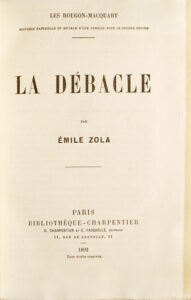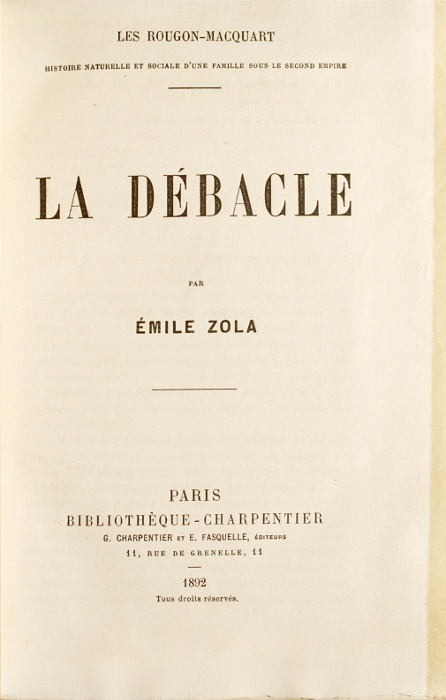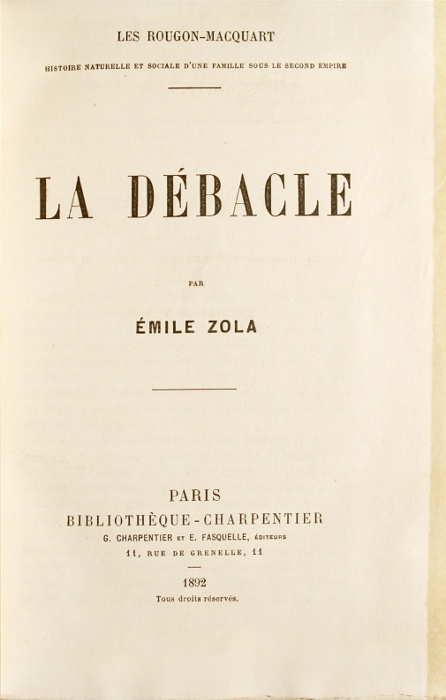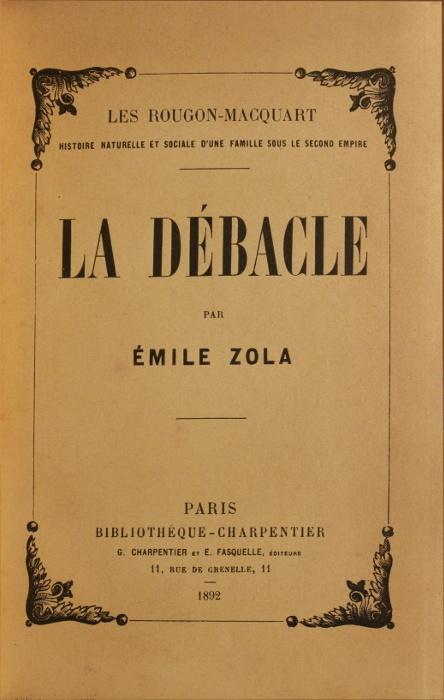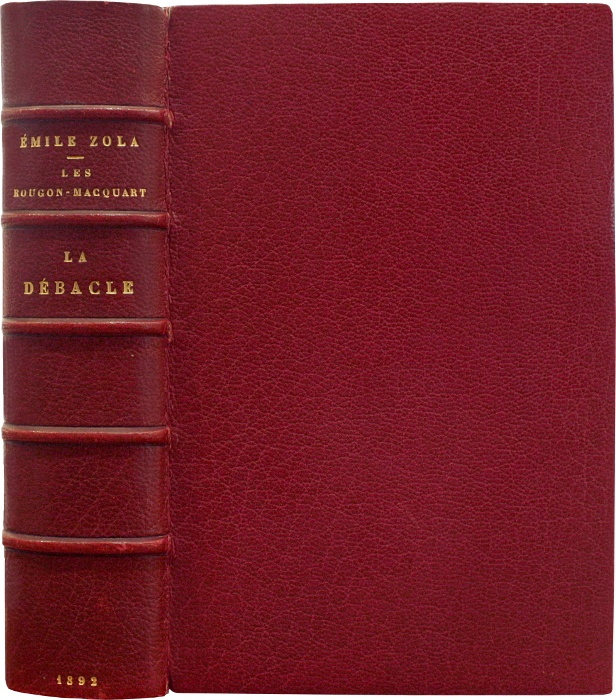Paris, G. Charpentier et Fasquelle, 1892.
12mo [182 x 118 mm] of (2) ll. (half-title and title), 445 pp. Final blank leaf not preserved, 1st and last ll. browned. Full red morocco, spine ribbed and decorated with blind-stamped fillets, wide red morocco border decorated with seven gilt fillets on the doublures, gilt over untrimmed edges, yellow printed covers and spine preserved. Binding signed René Aussourd.
First edition, one of the 330 precious copies on Dutch paper.
Clouzot, p. 279.
“5 copies were published on velum skin, 30 copies on Japan paper and 250 on Dutch paper.” (Carteret, II, 488).
La Débâcle is the penultimate volume of the Rougon-Macquart series, a large literary epic made of 20 novels written between 1871 and 1893.
“This work by Emile Zola, published in Paris in 1892, is part of the ‘Rougon-Macquart’ cycle and is situated between ‘l’Argent’ and ‘Doctor Pascal’. During the Franco-Prussian War of 1870, soldiers Maurice Levasseur and Corporal Jean Macquart have to live side by side. Maurice, like the son of a bourgeois, handles with difficulties the military discipline and feels antipathy for Jean, who, as a good farmer, remains true to his duty, understands the necessity of a sound morality and never refuses to help anyone. The action takes place during the confused days of the campaign which ends in Sedan and in the defeat of France; but, at the time of the fall of the imperial regime, the tenacious and heroic virtues of the people which Jean incarnates remain solid […]. The work, constructed with some research in its ideological parts, contains vigorous pages about the war; it is a testimony to the struggles and contradictions which agitated the French people in the aftermath of the war of 1870 and, from this point of view, it is among the most prominent of the whole cycle.ˮ (Dictionnaire des Œuvres, II, 217).
“Twenty volumes were published from 1871 to 1893, from ‘La Fortune des Rougon’, novel of the family and the Second Empire, to the ‘Débâcle’ (1892) and the ‘Docteur Pascal’, which close the cycle, the first on the historical and social level, the second on the family level. […] But the novels do not merely transpose, often through the use of the myth, the great structural changes of the second half of the 19th century. They plunge, beyond appearances, into the dark areas of beings, explore vertigo, impulses, crazy stroke of the ‘human beast’.ˮ En Français dans le texte, 296.
A precious copy numbered on Dutch paper, bearing the number 168, with wide margins since untrimmed and with numerous untrimmed edges in its bright red morocco of Rene Aussourd with its yellow printed covers.
See less information
